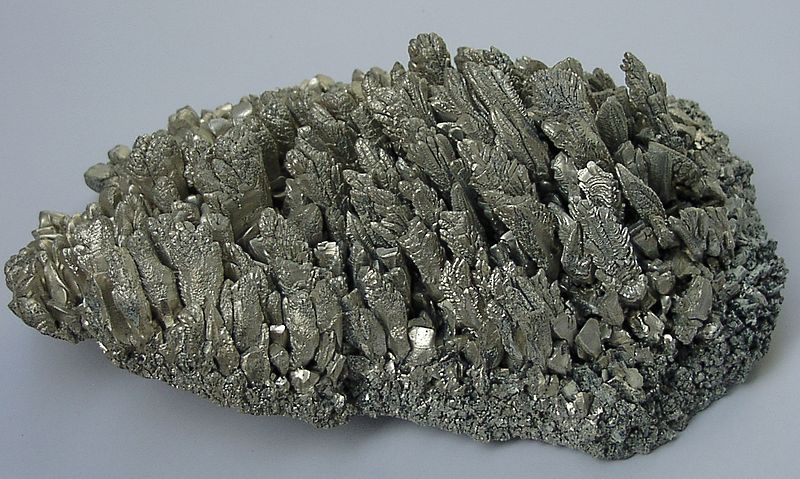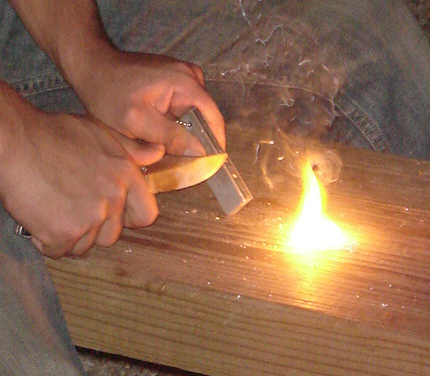

| Symbol: | Mg |
| Melting point: | 650'C |
| Electron configuration: | [Ne]3s2 |
| Atomic number: | 12 |
| Atomic mass: | 24.305±0.0006u |



| Ore | Common Name | Formula |
|---|---|---|
| Oxide | Periclase | MgO |
| Brucite | Mg[OH]2 | |
| Carbonate | Magnesite | MgCO3 |
| Dolomite | MgCa[CO3]2 | |
| Chloride | Carnalite | KMgCl3,6H2O |
| Sulphate | Epsomite | MgSO4,7H2O |
| Kieserite | MgSO4,H2O | |
| Polyhalite | K2Ca2Mg[SO4]4,2H2O | |
| Kainite | MgSO4,KCl,3H2O | |
| Borate | Boracite | Mg3B7O13Cl |
| Aluminate | Spinel | MgAl2O4 |
Magnesium is silvery white in color. It is soft and light. It melts at 651'C and boils at 1090'C. It sublimates in vacuum at 550'C. Magnesium is malleable and ductile.
It is a good conductor of heat and electricity. It forms oxide when exposed to the atmospheric conditions. Magnesium is used for production of light and special type alloys.
Majority of magnesium alloys are light and strong. These alloys are light and strong. These alloys are mostly used in aircrafts, missiles, space crafts, and satellites.
Major producers of magnesium metal are USA, Russia, Norway, Canada, France, Italy, Japan, China, and Germany. Magnesium enters into the composition of large number of rock
forming minerals. These minerals are Biotite, Pyroxene, Amphibole and Olivine
The minerals like magnesite and dolomite are used for preparation of refractory bricks. These minerals are used for preparation of ferro-magnesium. Ferro-magnesium is used
in preparation of special steels. Magnesium alloys are used in fabrications, extrusions, plates, sheets, castings, and forgings. The lightness of the alloys allows the design
of structure with stiffness, strength, and lower weight in comparison to other metals. To replace steel by magnesium alloy there has to be change in design of the structure.
To meet the strength of steel larger cross section is to be designed out of magnesium alloys. Cast magnesium alloys are in maximum use in comparison to wrought magnesium alloys.
Magnesium alloys are used in high stress conditions. The common alloying elements are aluminium, thorium, manganese, zinc and zirconium.
The important alloys are grouped in to four groups
1) Magnesium, Aluminium and Zinc
2) Magnesium, Thorium and Manganese
3) Magnesium, Thorium and Zirconium
4) Magnesium, Zinc and Zirconium
Magnesium is produced by electrolytic methods. Main source of magnesium are minerals like Dolomite, Magnesite, Brucite and Carnalite.
Sea water also contains magnesium.
Dow's process: Sea water is the main source of magnesium. Under Dow's process, sea water is rushed in to settling tank and mixed with milk of lime.
Hydrochloric acid is added to the tank to produce concentrated magnesium chloride solution. The solution is sprayed into a furnace against a blast of flame which
instantaneously evaporates most of the water. The electrolysis is carried out in a steel cell lined with fire bricks. The cell is heated from outside. The steel cell
is used as cathode and graphite rods are used as anode. The electrolysis of anhydrous magnesium chloride is simple from the point of view of separation of chlorine and
magnesium from each other. The metallic magnesium is produced at the cathode and chlorine gas is produced at the anode point. Sometimes impurities of iron and magnesium
are found after electrolysis. A conical cathode with system of inverted trough is provided to collect the magnesium metal to the collection sump. It is removed
for further use. Magnesium metal is formed into ingots. Some portion may be used for production of alloys. Magnesium collected from electrolysis has to be cleaned
properly before casting or alloying.